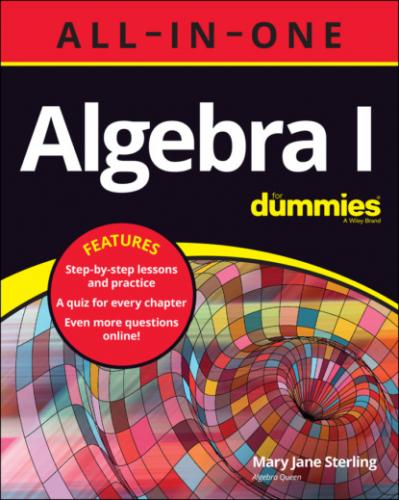31 9.2. Change the –6.8 to +6.8 and the subtraction to addition.
32 –4. Change the –11 to +11 and the subtraction to addition.
33 –18. The multiplication problem has one negative, and 1 is an odd number.
34 –14. The multiplication problem has one negative, and 1 is an odd number.
35 18. The multiplication problem has two negatives, and 2 is an even number.
36 144. The multiplication problem has two negatives.
37 –2. The multiplication problem has five negatives.
38 60. The multiplication problem has two negatives.
39 2. The division problem has two negatives.
40 –8. The division problem has one negative.
41 –6. Three negatives result in a negative.
42 30. The division problem has two negatives.
43 –4. The division problem has five negatives.
44 –1. The division problem has one negative.
45 4. Adding 0 to a number doesn’t change the number.
46 –4. Change the problem to
47 0. Multiplying by 0 always gives you 0 as a result.
48 0. Dividing 0 by a nonzero number always gives you 0.
If you’re ready to test your skills a bit more, take the following chapter quiz that incorporates all the chapter topics.
Whaddya Know? Chapter 2 Quiz
Quiz time! Complete each problem to test your knowledge on the various topics covered in this chapter. You can then find the solutions and explanations in the next section.
1
2 Use the inequality symbols to write the statement: “14 is greater than or equal to 12.9.”
3
4
5
6
7
8
9 Put the numbers in order from smallest to largest:
10
11
12
13 Which number is larger,
14
15
16
Answers to Chapter 2 Quiz
1 0. Yes, there are four negative signs, but 0 has no sign.
2
3
4 0. Any number dividing into 0 (except 0 itself) results in 0.
5
6
7
8 4. Change the subtraction to addition, and change the second number to the opposite sign:
9
10 11.3. This is the absolute value function. When applied, it produces positive numbers or 0.
11
12
